
Youyu Jiang, Ji Tie, and Mohsen Jaafarnia (2017). History and Truth: Using media as a weapon. The People Museum Journal, Volume 3, Issue 1, ISSN 2588-6517

History and Truth: Using media as a weapon
Youyu Jiang
Assistant Professor, School of Design, Hunan University,
China
Ji Tie
Professor, School of Design, Hunan University,
China
Mohsen Jaafarnia
Assistant Professor, School of Design, Hunan University,
China
During the Second World War the United States, Great Britain and France were allies; but in retelling and interpreting the events of that war the leaders and the historians of these nations differ considerably among themselves. If the history of the war were to be studied according to the views of the writers of the Soviet Union, Germany and Japan, the discrepancies would reach the point that one might imagine they were speaking of another war and of different events.
The ancient Iranians were convinced that Iran was the first, the most radiant and the dearest land created by God. The Greeks labeled all non-Greeks as ”Barbarians” . People of the white race consider only those Chinese to be beautiful whose facial characteristics happen to be similar to their own, while the yellow race has an aversion to the white man's hair-covered body and to his nose, which cuts his face in two like a wall (Nasr, 1974).
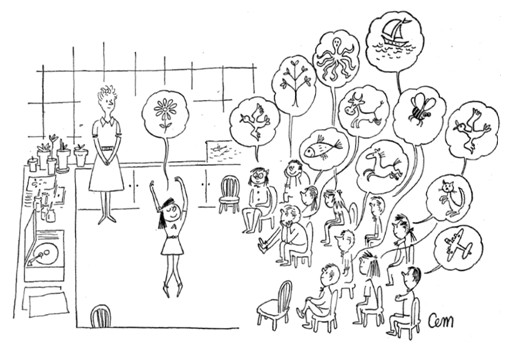
Figure 1. Imitating a flower and perception of viewers.
Even natural scenery, animals and plants are not seen by all peoples through the same way or interpreted in the same manner. This is one of the main reasons for the differences that exist among works of art. Iranians, the Chinese and Westerners have all designed the shape of lions (Fig. 2) but these are greatly dissimilar, not because the lions seen by the designer of these various national groups were different in themselves but, rather because the artists of each nation concentrate their attention on particular aspects of the lion’s characteristics and have particular objectives in view (Nasr, 1974). This also reflects the ambiguity of symbols where sometimes one form can create different meaning and communicate different emotional expressions to people of different cultures (Mijksenaar, 1998).

Figure 2. Left, Lion on the First Persian coin, 6th Century BC. Achaemenian. Right, Chinese perception of lion.
It is seen in the illustration of figure 1, used by Ernst Gombrich (1960) in his article’ The visual image’ where a girl is dancing, imitating a flower. It is very difficult to have a correct perception and interpret what she was doing. This represents the challenges that historian face.
In recent times the great majority of historical works have been written by Westerners, and, therefore, the history of man is usually viewed through their eyes. The historical events, legacies and valuesystems of the nations of the world are judged according to criteria which have come into being during the course of Western history. Naturally, it is extremely difficult for those who have been nurtured upon such criteria to base their judgments on the genuine standards and value systems of the countries being studied, such as Iran, China or India.
Worse than all of the aforementioned factors are the difficulties which arise from the biases and ulterior motives of writers and even so-called historians. How many of ethnic, religious, political, economic and military prejudices have prevented those who record and interpret history from reporting the truth as it happened or at least as they saw it?
Bromiley mentions history is contingent, but truth is necessary. History is in time, temporal, but truth is above time, eternal. We know that some parts of historical events are not real, or that they have not a truth of their own. (Bromiley).
The Greek physician Ctesias who stayed at the Achaemenian court for seventeen years, in a detailed book about Iran concerning which only brief notes have survived, repeatedly calls his countryman Herodotus a spinner of yarns and a liar. He also disagrees with some of what Xenophon has written about the ‘Retreat of The Ten Thousand’ Greek mercenaries.
In this way J. H. Iliffe says : “... the vast Iranian Panorama in which our ancestors arose and flourished seems as remote to the majority as the moon ... Our information all too scanty as it is, derives from foreigners, from Jews and Greeks, the national enemies of Persia. This is a powerful handicap. To present the Persian side is to assume the role of advocates diabolic, so completely has it gone by default.” (Iliffe, 1953) also L. Lockhart mentions: “... the conceptions of Persia formed by Europeans differed widely, some regarding her merely as a country to trade with, others as a land to evangelize, while others again looked upon her as an ally against the Turks.” (Lockhart)
For men of Medieval Europe the past, the present and the future were more or less the same, and, therefore, they paid no attention to the writing of history. In the sixteenth and seventeenth centuries historians were mainly concerned with finding in the past the precedents and reasons for their own religious beliefs. In the eighteenth century the writing of history moved a step forward, but still did not become completely free from medieval modes of thought or from religious fanaticism. In the nineteenth century nationalistic feelings greatly intensified and historians, men of letters and politicians, knowingly and on purpose, or at times under the influence of their surroundings, set out to prepare a genealogy proving the originality and superiority of European civilization; historical truth was not their concern (Nasr, 1974).
The nations of Europe considered themselves the authentic heirs to the civilizations of Greece and Rome. For them it was axiomatic that Greek civilization was superior to the civilizations of the Middle East and Asia, and in support of this thesis they set out to invent historical evidence. Even today, the influence of this prejudice is so strong that for the most part Westerners will pay no attention to anything that does not lend support to it.
Similarly, much of what was written by Westerners during the period of imperialism concerning other countries is tainted by ulterior motives and personal interest. On the one hand, the imperialists wanted to convince their countrymen that what they were doing was in the best interest of not only their own country but also of the lands under their sway. On the other hand, they considered it necessary to weaken the spirit of the peoples being exploited and to prove to them that submission to imperialism was the best way to better their own condition (Nasr, 1974).
For example, to strengthen their domination over India and to break that country's traditional ties with Iran the British propagated the myth that the Iranians have always been afraid of the sea and sea phobia: Malcolm, Curzon, Sykes, Wilson and the author of well known histories of Iran, all strove to spread this myth. However, a number of notes left by the very same authors indicate that they knew full well that this myth did not accord with the truth. Actually, contrary to what these soldier-historians have written, the Iranians had sailed for centuries not only on the Persian Gulf and the Sea of Oman but also on all the dangerous seas extending from China to East Africa. All these waters were under Iranian influence and Iranians were the first people to concern themselves with wide scale maritime exploration and trade (Hassan, 1928). A large number of Sassanid gold coins of different kings have been found in southern China (keeping in Shanghai museum); and early Tang Dynasty coins excavated by David Whitehouse in Siraf in southern Iran (keeping in the British Museum, figure 3), all confirming Sassanid maritime trade which was before Arab occupied Persia.
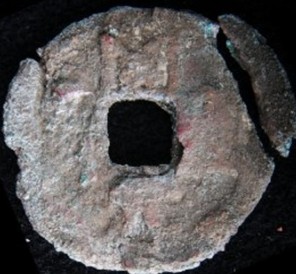
Figure 3. Coin, 621 A.D. Tang dynasty. Excavated in Siraf, Site: F Area: S Context: 38, Copper alloy coin; Diameter: 25.1 mm. The Trustees of the British Museum. 2009,4088.183.
Apart from the stories which attribute the building of the first warship to the mythical Iranian king Jamshid, there are historical references that the Iranians of the Achaemenian period circumnavigated Africa and entered the Mediteranean Sea by way of the Atlantic Ocean. Approximately 2,000 years passed before the Europeans were able to accomplish the same feat in the other direction (Nasr, 1974).
Again, it was the Achaemenians who, with 200 ships, explored the shores of the Persian Gulf, the Sea of Oman, the Indus River Delta and the Islands and shores of the Indian Ocean. The Black Stone shipwreck discovered in the sea area of Indonesia in 1998 is the evidence shows Persian had trade in a large scale through the sea, on which there were some 60,000 of well-preserved gold, silver and ceramic products which more than 80 percent of them were made by Changsha kiln. These unique products of the wreck are in Asian Civilisations Museum (Wade, 2003; Abaei, and Jaafarnia 2015).

Figure 4. Location of Black Stone Shipwreck.
They also sailed around the Arabian Peninsula and returned to Iran by way of the Red Sea. The Achaemenian invasion of Greece by sea and the Sassanian conquest of the Yemen with 20,000 soldiers are two examples of Iranian maritime exploits during ancient times.
And Iran is not the only country so poorly treated by western writers. As J.B. Trend states that: “The modern Spanish school of scientific historians are not favorably disposed towards the legacy of Islam.” (Trend, 1952) and Michael Edwards confesses that ”our writing of India's history is perhaps resented more than anything else we have done.” (Michael Edwards, 1943).
Today this issue has reached to the highest point as media also is helping historian to make the face history and change the reality of Iran; as we all know, Hollywood has been a source of entertainment for millions of people over the years. If one have a look at Hollywood archive, one can see there are several films about Persia. ‘Alexander’ , ‘300: Rise of an Empire’ and so on. These historical films can be tremendously entertaining and emotive, but they are not all that accurate and not true to what actually happened. So often the Hollywood version is not all that much like the reality.
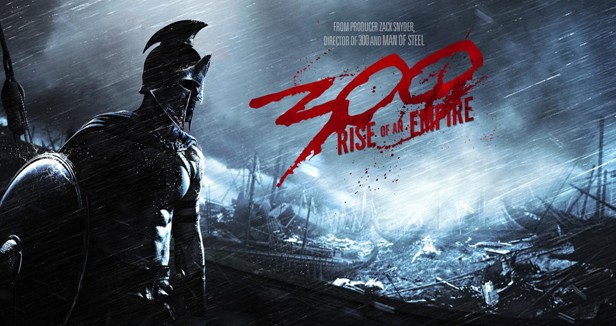
Figure 5. Truth-less American movie of ‘300: Rise of an Empire’.
All people are under the influence of the American media inductions; and are not able to distinguish the difference between real and fake situations. These issues happen under the advice of CIA. They directly and sometimes indirectly support designers financially to lead these designers to fulfill their ominous goals. Rose Davidson, Scottish journalist says, “The stars and writers of Hollywood consult the CIA to make the CIA’s deliver their messages through their movies to the American people”.
The new global society is a society based on information which belongs to media monopoly. Nowadays a variety of newspapers, magazine, media, film and cinema all go in the direction of the specific aim; their production have found independent characteristics which can be effective agent for any governmental plan; in this way they create new values and beliefs, and control ideas of human individuals and groups to lead them in the direction of the navigation unit for a purpose in the world.
This Steering flow of peoples’ mentality change their consumers’ culture and beliefs with the media and the production to make new identity for them. Among the various media the role of cinema and film is more effective as a major industry in the world; between all media Hollywood is completely different. Hollywood cinema from the beginning of its work has gone in the way that people know the world of cinema with Hollywood.
Any communication through media has certain messages to the world; it cannot be void of meaning and message. The film as a communicative tool is talking about a variety of economy, politics, culture, and ... And according to the specific aim of leaders film makers put relevant contents to change consumers’ culture. The culture represents all beliefs, behaviors, values and aims, Culture create the lifestyle of each nation whatever a nation is doing and thinking (Smith, 2008).
Today, media is the most important tool to create excellence for western culture also it is the most important tool to destroy a nation and the most important helpful factor for the implementation of the capitalism’s and imperialism’s aims and the soft threats around the world.
American sociologist Daniel Bell believes that “the cultural imperialism is an inseparable part of known trends in the direction of globalization. Cultural imperialism destroy the local culture of countries and replace the dominant western cultural values in this way the local and old cultures have been threatened”.
I used to live in India for 4 years, I realized no one changes the direction of antenna on the external media; when questioned, they told it is forbidden to do so; and of course it must be forbidden. Because the poison of food will be treated in one day, but the poison of media even after years may create problems for the viewers and his society for a long time. For instance the situation in Syria or Libya has deteriorated due to such influential media (Jaafarnia, 2017).
This use of media by media owners (Governments) and designers is designed to control the people. It means, imperialism instead of using police to control their people inside their country and also instead of using army force in other countries (for the purposes making involvement treacherous), which may be costly and also unsafe for them, try to find free soldiers created by media who talk about their benefits or even in a higher level of action lead to war with their government (in case of making outside involvement treacherous). The same as problem in Syria, Egypt, Libya, Tunisia … that US created without sending even one soldier to their country (Jaafarnia, 2017).
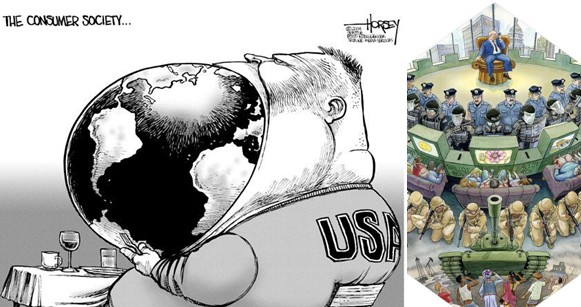
Figure 6. Imperialism.
Dwight David "Ike" Eisenhower (who was an American Army general and statesman who served as the 34th President of the United States from 1953 to 1961. During World War II, he was a five-star general in the United States Army and served as Supreme Commander of the Allied Expeditionary Forces in Europe. He was responsible for planning and supervising the invasion of North Africa in Operation Torch in 1942–43 and the successful invasion of France and Germany in 1944–45 from the Western Front); He define the 'intrusion' as an important tool which US can use against the other countries. He says the biggest war after WWII is the war for conquering the minds of people in the world. In the same way Yoshihiro Francis Fukuyama (who is an Japanese-American political scientist, political economist, and author. Fukuyama is known for his book The End of History and the Last Man (1992), which argued that the worldwide free market capitalism of the West and its lifestyle may signal the end point of humanity's sociocultural evolution and become the final form of human government. However, his subsequent book Trust: Social Virtues and Creation of Prosperity (1995) modified his earlier position to acknowledge that culture cannot be cleanly separated from economics. Fukuyama is also associated with the rise of the neoconservative movement, from which he has since distanced himself.) says "for having any conquest on a country must change the mind of people. If we do not change desires of people from being traditional, patriotic, dedication and courage which make their culture to other values such as following prosperity, welfare , modernism and westernizing, it means we could not conquest at all.". Mohammad Mahdi Samti in his book ‘the era of CNN and Hollywood’ mentions “in fact ‘cultural imperialism’ is the most elegant type of imperial policy and its goal is not to acquire land and the control the economy of other countries, but it is trying to overcome for changing power relations between two or more governments through controlling humans’ mind. If we accept ‘controlling a culture’ as a factor to conquer people's mind in different regions of the world with the aims of seeking excellence against other countries, with this victory West/imperialism reaches its goal therefore this tool works better than any other military tools; in this way imperialism acts as a supplementary role "(Samti, 2007). In this way Waldemar Perez is talking about “Mainstream Media as a Political Weapon” at Portland Community College in Oregon. It covers the study of MSM propaganda tactics and how they are implemented. From techniques used 100 years ago to the latest tactics used by the media to manipulate the election. He says: “…, my name is Waldemar. I used to work for the Department of Defense. On my spare time I am an activist. I’m part of a very diverse group of Oregon activists that come from all political, academic and professional backgrounds. Our common goal is to wake up the public and expose the bold lies of the now rapidly collapsing corporate media, to show the dangers of consuming information without verifying and to warn about the current tsunami of censorship already engulfing the last bastion of truth, the internet. We are very concerned that a small window of opportunity to educate the public and look behind the facade of the MSM exist, but is rapidly closing. The title of this presentation is Mainstream Media as a Political Weapon. In this presentation you will see in action our scientifically-crafted, deceptive and predatory corporate media attempting to infiltrate our minds in order to control and or shape our political, scientific, moral views and in general weaponizing information. This covert and subtle social control that a small group of smart individuals can exert on the public and even entire nations is astonishing. This is an extensive subject that requires time and study. What we are about to show you is only a small fraction of all the evidence we can present. This evidence will challenge your belief system, and it is also far more entertaining than any show currently on television. I would like to invite you to stay for at least, the next 20 minutes to show you the overwhelming amount of evidence that demonstrate how our own emotions are weaponized by the media and used against us [the targets of imperialism] in order to divide us and or manipulate us into war and hate., …”
Herbert Schiller quotes from Immanuel Wallerstein to explain the ‘cultural imperialism’ that “term of ‘cultural imperialism’ represents a kind of the social influence which through that a country dictate their own perceptions, values, behavioral norms and also their lifestyle to other countries”. When a country tries to influence their political and economic power in a country, naturally expect to see its vogue cultural influence first (Matmadnjad, 1997).
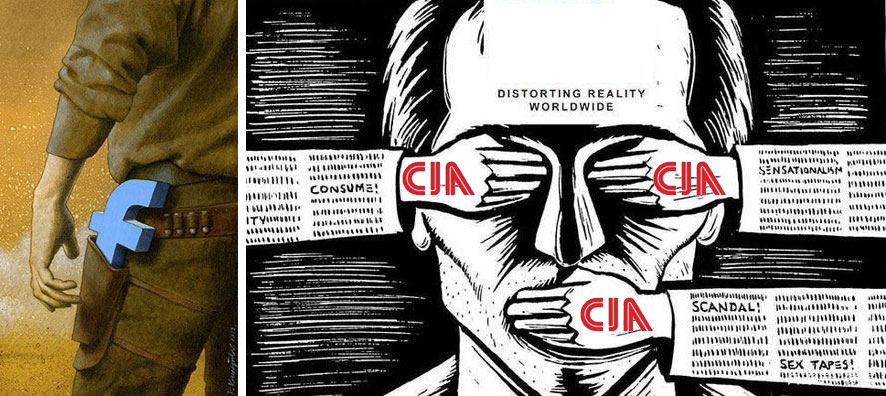
Figure 7. Mainstream Media as a Political Weapon.
Undoubtedly one of the most powerful tools for cultural imperialism by the West is the Western American media with management of Hollywood film industry; and today this great movie-making industry as a powerful tool works in the international level, to induce the Western worldview as a superior civilization to his audience. related to this issue we see how they try to change the history of Iran. For instance, film ‘Alexander’ made by Oliver Stone in 2004 in which the story is about Alexander's childhood and then battle of Alexander with Darius III and displayed the destruction of Achaemenid Empire. This movie passed Alexander with a very kind face that battled and could win Persians (Dole, 2015).
In another case, movie ‘300’ shows Persian are wild; these are evidences which tell us Hollywood movies changing the truth of Persia history. The film ‘300’ is about the battle of Thermopylae (Spartan) with Xerxes (Achaemenid King), the film shows the story in the way which is interest to the West. It shows 300 brave Spartan gave freedom to Western from the Iranian revolutionary guards with 2 million 700 thousand Devils [soldiers] in awe of defiled Overlord.
Conclusion
In an era when the media, surrounded around the world; its amazing affective role cannot be irrefutable in social, cultural, and political developments. This technology has a huge ability to lead human mind in the way which has benefit for them.
Movies such as ‘Alexander’ and ‘300: Rise of an Empire’ targeted the ancient history of Iran through its attack. The historical source of these unrealistic productions has been distorted by Western historians for making such films with a global range and distribution of biased anti-Iran. Troubling thing about this movement is the soft impact for the aim of Iranian-phobia in the world. And this is not the issue against the Iran, as imperialism does the same against all Asian countries.
An indication of the fact that the nations of Asia have once again come to themselves is their growing concern with history. This is not so much to provide consolation for present backwardness (made by imperialism) by exploiting past glories, as it is to discover what factors brought about their development in the past and to what extent these factors are relevant to their progress in the future.
References
Abaei, Mohammad, and Mohsen Jaafarnia 2015. “Where Was the Destination of Black Stone Shipwreck: Comparative study on founded products in Iran and products of Black Stone.” aper presented at the New Silk Road Program 2015.
Bromiley, Geoffrey W. year. HISTORY AND TRUTH: A STUDY OF THE AXIOM OF LESSING.
Dole, Fatemeh 2015. “Iran and wave distorts the history by of Hollywood.” Islamic Republic News Agency – IRNA. 81131610 (3961655). http://www.irna.ir
Gombrich, E. 1960. Art and Illusion: A Study in the Psychology of Pictorial Representation. London: Phaidon Press.
Hassan, Hadi 1928. A History of Persian Navigation. London: Publication.
Iliffe, J. H. 1953. The Legacy of Persia. Edited by A. Arberry, Oxford: Claredon Press.
Jaafarnia, Mohsen 2017. Everyone Is Designer. Ghochan, Iran : MJ Publication. ISBN: 978-600-04-7870-4 https://www.researchgate.net/publication/319502419_Everyone_Is_Designer
Lockhart, L. year. Titel. P. 358 (1- 4).
Matmadnjad, kazem 1997. Media quarterly, year VII, issue 2.
Michael Edwards, J. 1943. Making of Indian Princes. New York: Putmans Sons, quoted by J. Nehru, 1946. The Discovery of India. New York: The John Day Co.
Mijksenaar, P. 1998. Visual Function: An introduction to information design. New York: Princeton Architectural Press.
Nasr, Taghi 1974. The Eternity of Iran. Tehran: The Ministry of Culture and Arts publication.
Samti, Mohammad Mehdi 2007. The era of CNN and Hollywood. Tehran: Nashr e Ney.
Smith, Philip 2008. Cultural Theory: An Introduction. Hoboken: Wiley-Blackwell.
Trend, J.B. 1952. The Legacy of Islam. Ed. by Sir Thomas Arnold. Oxford: Oxford University Press.
Wade, G. 2003. “The Pre-Modern East Asian Maritime Realm: An Overview of European-Language Studies.”. Working Paper Series , Asia Research Institute, National University of Singapore. No. 16: 20.
![]()
© 2017 by the authors.
Submitted for possible open access publication under the
terms and conditions of the Creative Commons Attribution (CC BY) license
(http://creativecommons.org/licenses/by/4.0/).